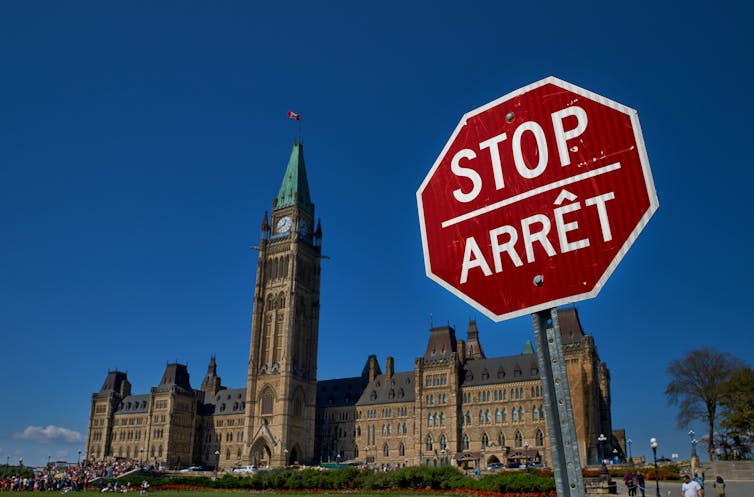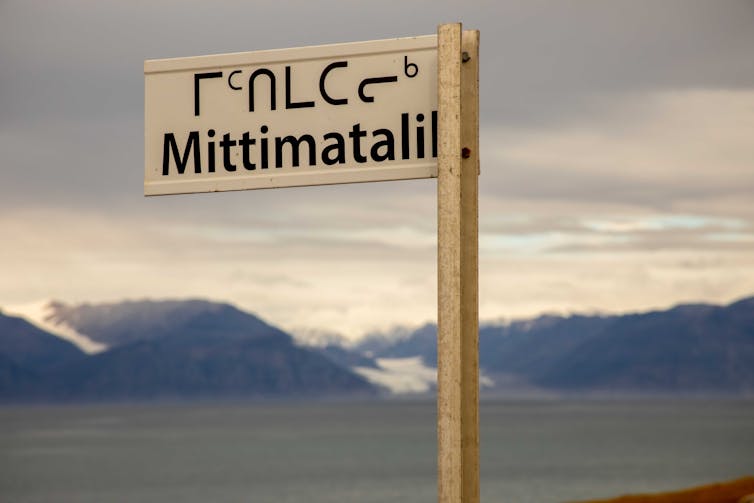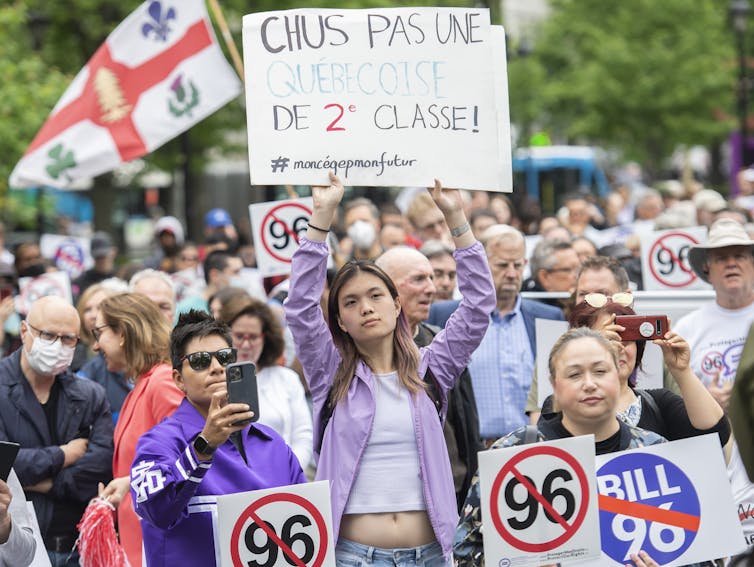
Veaceslav Balan, L’Université d’Ottawa/University of Ottawa and Frederick John Packer, L’Université d’Ottawa/University of Ottawa
In August 2022, Statistics Canada released the latest census data on languages in Canada. According to the data, over nine million people — or one in four Canadians — has a mother tongue other than English or French (a record high since the 1901 census).
Twelve per cent of Canadians speak a language other than English or French at home. Statistics Canada observes that the country’s linguistic diversity will likely continue to grow into the future.
Yet, recent developments in language policy and practices in Canada reveal that there is confusion and misunderstanding among government officials and the general public about language use, international language rights and their implications.
In Canada, there must be greater understanding of the cultural and linguistic rights of minorities. According to universally accepted human rights, persons belonging to majorities and minorities should have equal rights. Minorities are entitled to equal conditions and services to enable them to maintain their identity, culture and language.

The 1966 International Covenant on Civil and Political Rights, a human rights treaty to which Canada is a party, provides that “In those States in which ethnic, religious or linguistic minorities exist, persons belonging to such minorities shall not be denied the right, in community with the other members of their group, to enjoy their own culture, to profess and practise their own religion, or to use their own language.”
The 1992 UN Declaration on Minorities clarifies and expands on this treaty provision. It stipulates that UN member states should enact legislative and other measures to protect minority identities.
Confusing words
Two words are often confused in Canada: integration and assimilation. When speaking about immigrants and refugees, Canadian law’s stated objective is integration. And the default framework for integration is the majority culture and language.
Non-anglophone and non-francophone immigrants are expected to adapt and conform to the Canadian way of doing things, learn Canadian history, celebrate Canadian holidays and speak in one or both of Canada’s official languages.
But these languages reflect the cultures of Canada’s two historically dominant groups. For many Indigenous people and immigrants, histories, holidays and languages differ from the majority of Canadians.
Involuntary assimilation is prohibited under international law. This is a colonialist and imperialist practice which ultimately forces people to alter or surrender their identity, culture and dissolve into the majority.
Canada’s notorious residential schools were one of the harshest examples of such assimilationist policies. Other essentially assimilationist practices continue to this day. For example, the law states that provinces must provide education to English or French-speaking minorities in their own language. But there is no similar legislation for Indigenous languages, nor for those spoken by people who immigrate from all around the world. These policies will increasingly conflict with growing diversity as Canada seeks to welcome 1.5 million immigrants over the next three years.
In contrast, integration is based on recognition of diversity. Integration is a two-way process through which minorities and majorities learn about and engage with each other’s cultures and languages.
While maintaining their own distinctiveness, majority and minority groups contribute to shared foundations and institutions of the society out of common interest and for mutual benefit. This is important for the many individuals who possess multiple or overlapping identities.
In 2012, the Organization for Security and Co-operation in Europe, of which Canada is a participating state, released Guidelines on Integration of Diverse Societies, in which it explained:
“Integration is a process that requires that all members of a given society accept common public institutions and have a shared sense of belonging to a common State and an inclusive society. This does not exclude the possibility of distinct identities, which are constantly evolving, multiple and contextual. Mechanisms aiming at mutual accommodation are essential to negotiate the legitimate claims put forward by different groups or communities.”
Integration requires accommodation of diversity. It also means that governments should invest proportionally in the promotion of majority and minority cultures and languages with a view to facilitating full lives in dignity and equal rights for everyone. This requires more than token support for cultural activities such as traditional food and dance.

There is also confusion around the issue of minority language status. In Canada there is a common belief that the only minority language(s) entitled to protection are the ones with official or other recognized status. But according to international human rights principles, all minority cultures and languages should be protected regardless of whether they hold “official” status.
This means that the languages of Indigenous Peoples as well as of other people living in Canada should be acknowledged and facilitated. This is essential for their well-being and for genuine equality in rights.
Not a zero-sum game
Genuine integration should respect and promote diversity in the languages used in various contexts of public life. This does not necessarily require changing the number and status of official languages; it’s not a zero-sum game. But it does require adjusting language policies to reconcile with existing realities in reasonable and meaningful ways. The aim is real and effective equality.
Technological innovations (such as easily accessible real-time translation) make this more possible and cost-effective than ever.
In order to live together peacefully and embrace diversity, Canadians need to understand that languages are not just a means of technical communication, but are often at the core of people’s identity and culture. Taking away a person’s language often amounts to taking away their sense of self, dignity and community belonging. It also suppresses the remarkable linguistic assets that Canada possesses.
Building a Canadian nation through assimilation of minorities in the face of increasing diversity only generates social tensions and conflicts. It is not democracy, it is majoritarianism. It is contrary to fundamental human rights and signals social regression rather than progress.
Instead, Canada should foster a forward-looking, human-centred and dynamic society that embraces diversity, multiculturalism and multilingualism. This is to our advantage. Canada’s rich linguistic diversity is an asset that should be valued. We must cast off the old colonialist thinking and seize the rich possibilities that are at hand.![]()
Veaceslav Balan, PhD Candidate, Faculty of Law, L’Université d’Ottawa/University of Ottawa and Frederick John Packer, Associate Professor of Law and Director of the Human Rights Research and Education Centre, L’Université d’Ottawa/University of Ottawa
This article is republished from The Conversation under a Creative Commons license. Read the original article.

